Mumbai’s dirty secret out in the open
While govt spends crores on a WiFi network, coastal road and Metros, lakhs still carry a mug of water and trek into the open to relieve themselves
Mumbai’s civic body claimed last year it had rid the city of open defecation — a claim that has since been disputed by the state government. Which of them is right then? The answer lies right under our noses, in every corner of this city, in its crowded slums, around its swanky high-rises and with those people who call its streets their home.
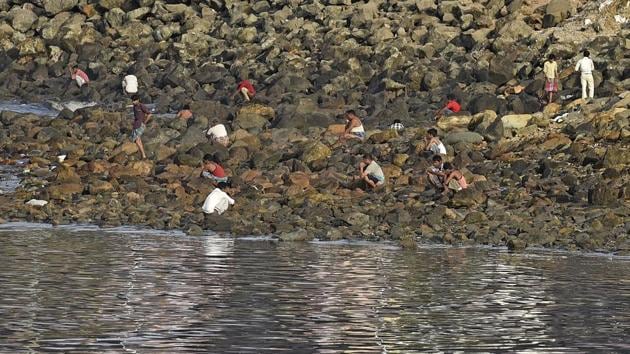
HT visited several spots — behind the iconic Taj Mahal Palace in Colaba, bang in the middle of posh Bandra, opposite Antop Hill’s Vidyalankar College — and found open land and footpaths were doubling up as toilets.
The hunt for loos
Mumbai is not the only Indian city where people relieve themselves in the open. The NGO Water Aid, in a 2016 survey, found 4.10 crore people in India practice open defecation. But Mumbai is a huge contributor to that number, what with more than half its population living in slums.
The Brihanmumbai Municipal Corporation claimed otherwise in December 2016, when it declared the city was free of open defecation. There were caveats to this claim — it excluded land under the Railways, defence land, port land and Aarey Colony in Goregaon.
But the BMC appears to have overlooked areas like Ambedkar Nagar in Marol, Sher-E-Punjab in Andheri (East), Bandra Plot in Jogeshwari, Sariput Nagar in Powai, Gorai and Sai Dham Nagar in Charkop, Himmat Nagar, Shanti Nagar and Shastri Nagar in Antop Hill, Shyam Nagar, Bhavani Nagar and Chamunda Nagar in Bhandup, Cheetah Camp, Chembur, Mankhurd, Dharavi and even Bandra and Colaba — to name just a few spots where HT found no toilets, dirty toilets, under-construction (for months) toilets and toilets that were torn down. Several other independent surveys said there were at least a 100 spots where open defecation persists, and this is a modest estimate.
So even as the government sets up city-wide WiFi and plans multi-crore projects to make Mumbai a global city, a large number of people are still without clean toilets.
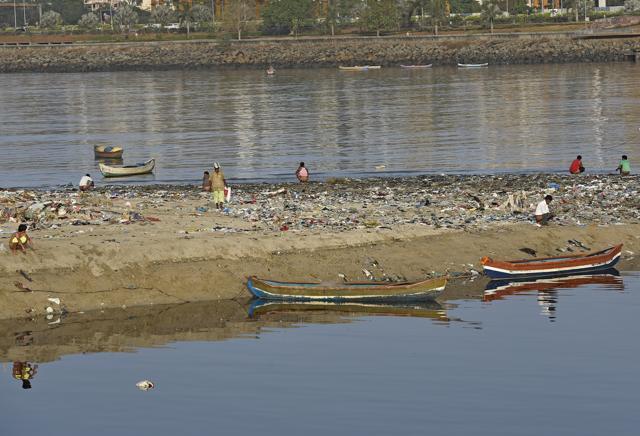
Toilet trouble
Most people HT spoke to said the public toilets in their localities were in such a bad state, they would rather go in the open.
“Every house contributes Rs20 a month, that’s about Rs12,000 that we collect to pay one person to clean our toilet. But he comes only when he feels like. On other days, the filth clogs the one toilet we have. Who will feel like using it?” said Anita Sharma, a resident of Shanti Nagar, a settlement next to Vidyalankar College in Antop Hill.
Another reason toilets aren’t maintained is the lack of water supply. A woman from the adjoining Himmat Nagar settlement said people carry water from home to clean themselves. “Who will give water to clean toilets?” Dhaval Desai, a researcher with the think tank Observer Research Foundation, said, “Many toilets are so poorly maintained, they can’t be used by a human. These are inhuman facilities given to the citizens in the name of civic amenities.”
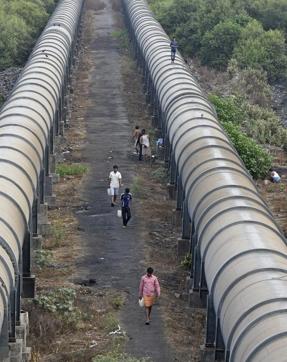
Problem of plenty
According to Bapu Gavthe, an engineer with Society for the Promotion of Area Resource Centers (SPARC), an NGO working for urban poor, “Ideally, one public toilet seat should be built for 10 families — considering an average of 5 per family, that’s one seat for 50 people. A BMC-approved 20-seater public toilet would cater to 200 families, or 1,000 people.” PM Modi’s Swachh Bharat mission set the benchmark at one seat for every 25 women or 30 men. In Mumbai’s slums, none of these standards are met.
In Deonar and Govandi, one toilet seat is shared by 190 people, according to surveys by the Tata Institute of Social Sciences. “People don’t have the patience to stand in queues in the mornings when everyone is in a rush to go to work. Going in the open is our only choice,” said a resident of Wadala’s Shastri Nagar.
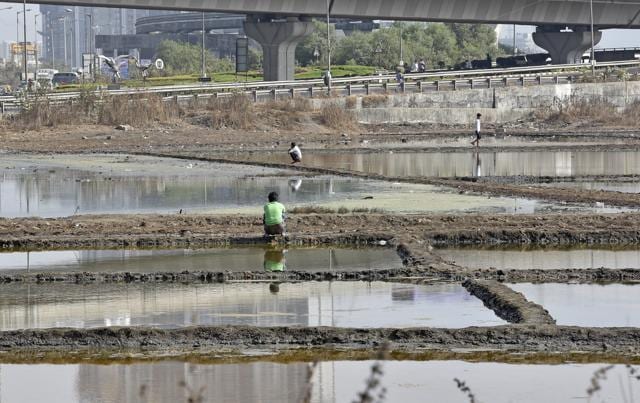
So, where do they go?
On the footpaths in Bandra Reclamation, Marol and Colaba; on an empty plot opposite Vidyalankar College, on salt pan land in Wadala, on the highway in Jogeshwari and Powai… everywhere HT went, there was no dearth of space to go, and people were employed to shovel all this filth — visit any of these spots in the afternoon and the only evidence you’ll find are the stains left behind.
But somehow, there is a dearth of space, and a lack of will, to build functional toilets for Mumbai’s poor. “Permissions take months, and that is our biggest problem,” said Samadhan Jugdar, a Shiv Sena shakha pramukh in Wadala. “We’re building a 12-seater using the funds of this area’s MP (Rahul Shewale), but it took time to get this started. No one wants to go in the open, but people just get tired of waiting.”
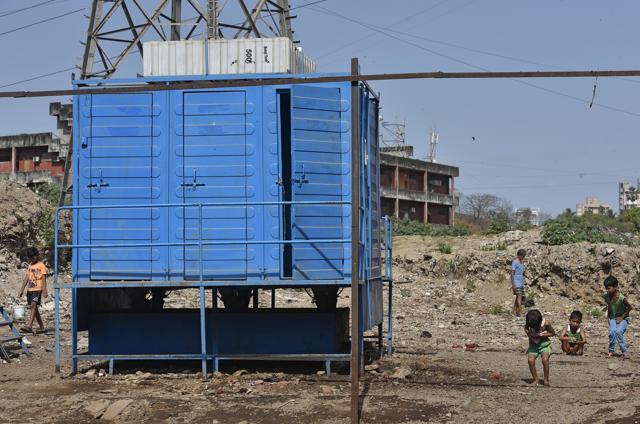
What is the problem?
Paying for toilets is one. “Pay-and-use community toilets generated Rs392 crore a year in revenue. That’s more than Rs1 crore a day being spent by the poorest of the poor in the city for the most basic necessity,” said Desai, who has authored a report on Mumbai’s sanitation. Desai said most of the 800 toilets built under BMC’s Slum Sanitation Programme lie unused and dirty for this reason. No one knows where the money goes.
One toilet in a Jogeshwari slum, near the Western Express Highway, is a mythical structure — there one day, gone the next. Locals say every time the toilet is built, it is demolished within days. Residents and NGO workers alleged it was a ploy for the contractor to make money. “With such an astronomical sum being collected, you can imagine how there could be so much meddling,” Desai said.
Bapu from SPARC said, “NGOs ask residents to form societies to collect funds and maintain the toilet. But there is a prevalent thought among people — why should we pay for something that is our basic right?” Poorly built, dangerous toilets are another problem. There are horror stories from Mumbai’s slums, where toilets built to last 30 years collapsed within five, burying its users. In 2015, a woman named Kalpana Pimple died in a slum in Mankhurd, when the toilet she was using collapsed.
Desai said, several toilets built by MHADA are ticking time bombs. “They have no water or power and are never cleaned. This leads to build up of waste.”
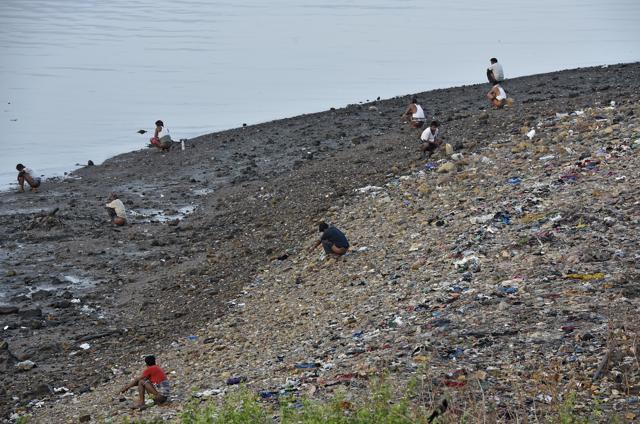
Is there a solution?
Bapu said the best solution is for BMC to build toilets. The BMC design is usually a 20-seater, ground-plus-one structure. To accommodate drains, the sewer line and septic tank, such a structure requires at least 130sqm. But getting NOCs and issuing tenders delay the process. “The BMC looks to build structures that will last at least 20 years. It takes months, sometimes years, to get permissions,” Bapu said.
Desai and ORF have advocated that the Swachh Bharat mission should promote a ‘One home, one toilet’ scheme. “I understand Mumbai has a space challenge. But at least 40% of homes can get their own toilets.” At all spots HT visited, an effort was being made, either by BMC, elected leaders, NGOs or residents. The issue, however, was with follow up.
“Just before a team from Delhi came a few months ago for inspection, plots of land were covered, portable toilets were set up and people were made to use them,” said Jugdar from Wadala. “When the team left, the sheets came down, portable toilets don’t even get water and people are back to going in the open.”
Desai pointed out that the young men and women living in these areas know how well the rest of the world lives, through the internet and their smartphones. But they are still forced to stand in queue or defecate in the open. “It’s a crushing experience.”
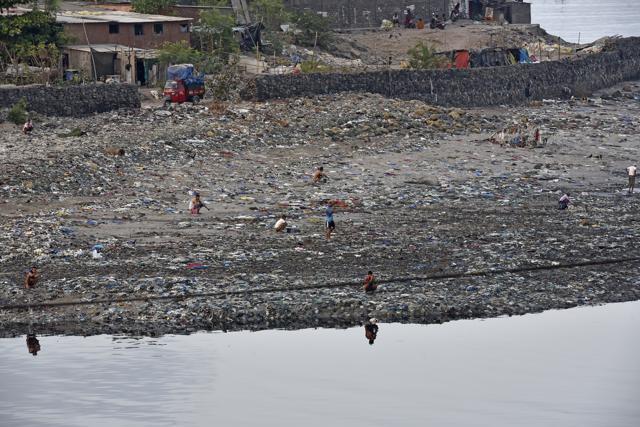
Our sanitation infrastructure is weak: Kiran Dighavkar, assistant commissioner, A ward and in-charge of the Open-defecation free project
Kiran Dighavkar, a BMC assistant commissioner, also in-charge of the civic body’s open-defecation free mission, said the corporation acknowledges the gap in infrastructure, which is a major reason open defecation is still a problem, and why Mumbai keeps relapsing even when steps to improve sanitation are being taken.
How many spots are currently free of open defecation?
When the Swachch Bharat Mission began, we identified 118 spots across the city. The civic body’s policy was to build toilets in areas that local councillors said had a problem. Then we began identifying these spots on our own. But building community toilets is taking time. Currently, we have set up mobile toilets at 84 spots.
Are the mobile toilets helping the issue? HT found several spots around the city where the problem persists
Over time, people stop using the mobile toilets because they are not cleaned. That is why you still find several areas in Mumbai where people still go in the open.
Why are the toilets not cleaned and maintained then?
Clean-up marshalls were appointed to ensure open defecarion does not happen. But they are not expected to monitor whether the toilets are being cleaned. Our main problem, the reason open defecation persists, is that our infrastructure is weak.
You said it takes time to build public toilets. Why is that happening?
Permissions take time to come through because most of Mumbai is on reclaimed land. There are delays in the process of getting no-objection certificates and procuring material to build toilets.
Why not a one home, one toilet scheme?
There is simply not enough space in this city to build toilets in every home. Such a scheme will not work.
There is a problem with follow-up…
We understand that there is gap – between how many toilets we need and how many there are. Our sanitation infrastructure has become weak. And then, we are dealing with permission issues and delays. We are looking into our weaknesses and gaps in policy to ensure we rid Mumbai of the problem at the earliest.
READ MORE
Mumbai civic body declares city free of open defecation, asks railways to watch tracks
Stay updated with all the Breaking News and Latest News from Mumbai. Click here for comprehensive coverage of top Cities including Bengaluru, Delhi, Hyderabad, and more across India along with Stay informed on the latest happenings in World News.
Stay updated with all the Breaking News and Latest News from Mumbai. Click here for comprehensive coverage of top Cities including Bengaluru, Delhi, Hyderabad, and more across India along with Stay informed on the latest happenings in World News.





